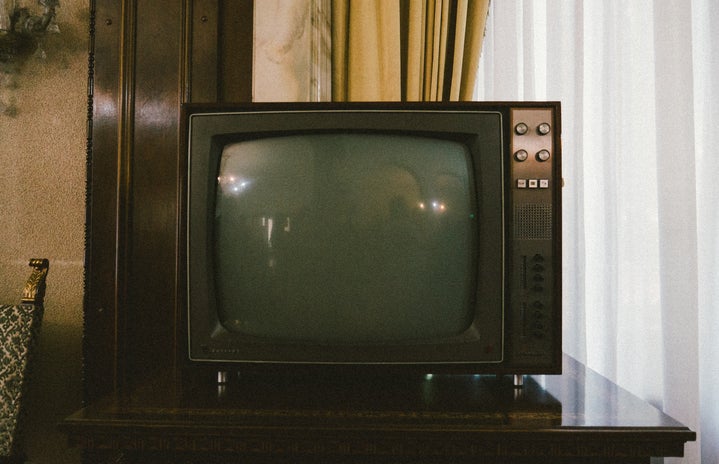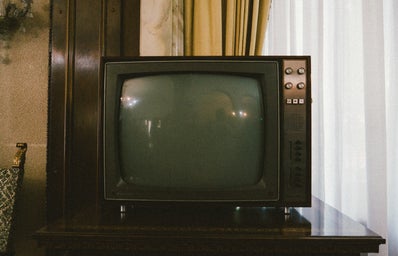Some people like mystery, some people like prestige, some people like sitcoms, and while all occasionally perk my interest, for me, the diverse medium of animated television is nearest and dearest to my heart. Though it can be hard to convince people to take the leap if they stopped watching cartoons after childhood, I do not exaggerate when I say there is an animated show for everyone, for all age brackets and in every genre. Today, I want to recommend a show that is opening doors and casting a spell on viewers.
The Owl House is a Disney Channel animated television program. The show centers Luz Noceda, a human girl whose love of fantasy and over-the-top personality lands her in the Boiling Isles, a macabre but charming fantasy world. It is there she encounters Eda the Owl Lady and the cuddly King of Demons, two outsiders in their own right who rail against the strict rules of society on the Isles. Eda agrees to take her on as an apprentice witch.
In many reviews, you are likely to find The Owl House linked to another juggernaut of Disney’s animated television line-up: Gravity Falls, a show which is widely considered one of the best cartoons of the 2010s. With The Owl House creator Dana Terrace having previously worked on Gravity Falls, and Gravity Falls creator Alex Hirsch voicing several characters in The Owl House, it is fair to see a connection between the two. Beyond those details, seasoned fans of Gravity Falls will recognize a similar sensibility in the two programs—a common self-awareness and sense of humor.
None of this is meant to imply The Owl House does not stand on its own. On the contrary, The Owl House is well on its way to earning its own place in the Animated Television Hall of Fame.
On the very face of it, The Owl House offers a more diverse world than predecessors, with more centrality for characters of color and LGBT+ characters. Luz Noceda is a Dominican-American and is confirmed as bisexual. The show makes space for her identities, Luz slips into Spanish on occasion and blushes at boys and girls alike. The Owl House made headlines for the episode “Enchanting Grom Fight,” which confirms side character Amity has a crush on Luz—a pairing many viewers would be thrilled to see—but even more important than this is that the show makes room for this representation in the first season; it does not intend to merely hint at their sexualities or wait until the final season to confirm them.
Beyond merely improving upon the mistakes of past shows, The Owl House plays in a sandbox entirely its own. Where Gravity Falls is a genre-savvy paranormal mystery show, The Owl House is a fantasy show that balances loving reverence for and criticism of the genre. Episode titles like “A Lying Witch and a Warden” and “Hooty’s Moving Hassle” reference C.S. Lewis’s The Lion, the Witch, and the Wardrobe or Studio Ghibli’s Howl’s Moving Castle. Examinations of the genre run the gamut. There is a sober deconstruction of the common “Chosen One” narrative in “Witches Before Wizards,” but at the same time the show isn’t afraid to poke fun at sillier tropes. For example, in “Wing it Like Witches” the cast play the fictional sport Grudgby, which is a clear send up of quidditch from the Harry Potter franchise. When Luz’s team loses because they fail to catch the Rusty Smidge she gives an iconic rant:“that just invalidates all our efforts! If catching that thing is so important why do anything else? There’s no reason to watch any of the other players; that’s such a stupid rule!”
More than anything though, The Owl House is a wonderful watch because of the beautiful heart that lies beneath all the jokes and magic. The Owl House’s main themes are embracing oneself and learning how to bond with others. Throughout the first season, Luz develops her abilities as a witch by embracing herself, weirdness and all. It is this weirdness that connects her to outsiders like Eda, King or her classmates Willow and Gus. Her journey includes forming her first real friendships.
Likewise, the show makes space for Eda, an older woman, to grow and change herself, which is something so tragically underrepresented in television. Her connection to Luz becomes a catalyst for growth and for reconnection with her estranged sister Lilith. Eda also deals with a curse that requires constant upkeep and leaves her feeling out of control of herself, a compelling metaphor for managing a chronic illness or disability.
Another area of exploration: a broader conflict arises throughout the show against a strict system of magic and education imposed by the evil Emperor Belos. This examination of repressive governments and educational systems feels relevant and needed.
The show is also a sincere love letter to fan culture: characters read fanfiction, make fan art, attend a covention (a coven convention) and obsess over books and shows without being mocked by the creators. It is this understanding, among other things, that has allowed it to carve out a reputation all of its own.
If you’re looking for a brilliant, funny, and sincere show with an immersive aesthetic, gorgeous animation and creative design, you should be watching The Owl House.



